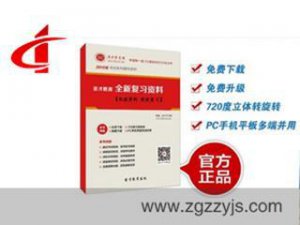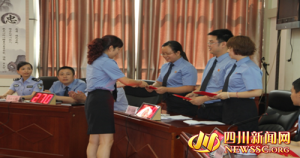|
Partnership - New option for foreign investment in China Zhiguo Li A new door to partnership is opened by the Chinese government to the foreign investors under this post-financial turmoil era in order to attract more foreign investment and provide more employment. On November 25, 2009, the State Council of the PRC promulgated the Measures for the Administration on the Establishment of Partnership Business by Foreign Enterprises or Individuals in China adopted at the 77th executive meeting of the State Council on August 19, 2009, which shall come into effect as of March 1, 2010 (“the Foreign Partnership Measures”). The Foreign Partnership Measures is regarded as supplementary to the Partnership Business Law of the People's Republic of China (“the Partnership Law”), article 108 of which provides that the measures for the administration on the establishment of partnership business by foreign enterprises or individuals shall be formulated by the State Council. Therefore the Partnership Law is the basic law for foreign enterprises or individuals (collectively “foreign partners”) to establish the partnership business in China (“foreign partnership”). The initial effort to formulate this kind of measures with the authorization of the Partnership Law can be tracked to January 2007 when the Ministry of Commerce of the People’s Republic of China (MOC), as requested by the Legislative Affair Office of the State Council, promulgated a draft of the Measures for the Administration on the Foreign Funded Partnership Business (“the Draft”) for public consultation. The Draft mostly reflect the intention of the MOC to remain the approval authority for the foreign partnerships as it does in the setup of the other three types of FIEs, such as equity joint venture, contractual joint venture and wholly foreign owned enterprise (i.e., EJV, CJV and WFOE, collectively FIEs). But the final Foreign Partnership Measures kick the MOC and its local branches (“the MOC local branches”) out from the charging authority with the replacement by the local authorized branch of the State Administration of Industry and Commerce (SAIC local branch), which is unexpected to but welcome by the professionals and entrepreneurs. This article will do analysis on the Foreign Partnership Measures from four perspectives: foreign partnership models, foreign partners’ qualification, thresholds and registration of the foreign partnership, in aiming to describe a clear foreign partnership roadmap for foreign partners. Foreign Partnership Models Foreign partners can set up the foreign partnership in China in three models: a. with the other foreign partners; b. with the Chinese individuals, legal persons and the other organizations registered and located in Mainland China; c. through participating the existing domestic partnership. In the models above, the foreign partners have the option to take the form of general partnership, limited liability partnership or limited partnership stipulated by the Partnership Law, among which the limited liability partnership is only for the professional institutions such as law firms and accounting firms. Comparing with model a and b, model c seems more feasible and time-and-cost saving for the foreign partners. A complete due diligence will be conducted in order to minimize the risk from the operation of the domestic partnership before the participation date of the foreign partners. In consideration of the current administration and nature of the partnerships, lack of credibility and the other elements in China, it will be difficult to get a complete due diligence report satisfied with the foreign partners. Therefore, models a and b are highly recommended. Which model of a or b take needs the consideration and balance of the foreign partners based on their business plan, legal structuring, such as whether foreign partners themselves intend to do the business competing with the foreign partnership and how to exit by transferring the contribution in the partnership, ect., and the thresholds discussed below. Foreign Partners’ Qualification The difference in the expression on the partners from overseas and China should be noted. Foreign partners only include foreign enterprises and individuals. The Chinese partners include Chinese individuals, legal persons and the other organizations. There is no unified legal interpretation on the “enterprise”, though mostly it refers to the profitable organizations. This uncertainty may come from the prudency of the legislator of China on the qualifications of foreign partners. Under article 184 of the Opinions of the Supreme People’s Court on Several Issues concerning the Implementation of the General Principles of the Civil Law of the People’s Republic of China for Trial (“the Opinions”), this expression of “enterprise” on the foreign partners allow the SAIC local branch more discretion to judge whether the foreign partner is a qualified “enterprise” or not in accordance with the relevant Chinese laws. In this scenario, the foreign partners need to note that they should not fall into the types of entities prescribed in article 3 of the Partnership Law if they aim to be a general partner, which says that wholly state-funded company, state-owned company, listed company, public-welfare-oriented institution or social organization may not become a general partner. Regarding the foreign individuals, they must have full capacity for civil conduct in accordance with article 14 of the Partnership Law. The international private law problem will also be involved here. Pursuant to article 180 of the Opinions, the foreign individuals who conduct civil activities in the territory of China, shall be regarded as having full capacity for civil conduct if they have that in accordance with China laws, no matter what their national laws requires for their capacity for civil conduct. Foreign individuals at or above the age of 18 years old are qualified to be the foreign partners if they are not mentally ill. Thresholds for Foreign Partnership Some thresholds, such as the approval by the MOC, imposed on the FIEs are lifted for foreign partnership. This means that the foreign partnership and the domestic partnership will be treated with unified threshold in the aspect of approval, which will definitely reduce the criticism from the international community, but may cause more from the domestic public (including those FIEs). But it does not mean that there will be no thresholds review on foreign partnership. Article 3 of the Foreign Partnership Measures lists the general thresholds for the foreign partnerships. The establishment of foreign partnership shall abide by the Partnership Law and the other relevant laws, regulations and rules, and comply with the industrial policies for foreign investment. These general thresholds need to be analyzed together with the reference to the other relevant laws, regulations, rules and policies. First, the threshold provided by the Partnership Law is the pre-approval on the business scope. Where the business cope of a foreign partnership contains any item, for example oil distribution, that is subject to approval prior to registration according to laws or regulations, such approval shall be sought in advance and submitted at the time of registration with SAIC local branch. These pre-approvals involve , but not limited to, the Ministry of Land, the Ministry of Transport, the China Securities Regulatory Commission, the China Banking Regulatory Commission and the China Insurance Regulatory Commission, etc., which depends on the business of the foreign partnership. Second, the Provisions on Guiding the Orientation of Foreign Investment (2002) and the Catalogue for the Guidance of Foreign Investment Industries (revised in 2007) (collectively “foreign investment industrial policies”) set up the industrial threshold for the foreign partnerships, which are the industrial policy basis for the SAIC local branch to review registration application to establish foreign partnership in China. This will obviously increase the working load of the SAIC local branches since they are lack of the experience in this kind of foreign investment industrial policies review. We may also anticipate that there might be different explanation and implementations on the above two documents, which will be the problem faced by those foreign partners who submit the application in the first half year after the Foreign Partnership Measures comes into force on March 1, 2010. The third threshold is that the verification is required if the project invested by the foreign partners falls into the scope described in the Provisional Measures Governing Verification of Foreign Invested Projects. The charging authority is the National Development and Reform Commission and its local branches, which depending on the amount of the total investment and the nature of the project. It is necessary to note the forth threshold hidden in the important expression in article 3 of the Foreign Partnership Measures, which put the “rules” as the legal basis for the establishment of foreign partnerships. In the legal system of China, it indicates that the State Council authorizes the ministries or departments under the State Council (“the Ministries”) to issue necessary “rules” applicable to foreign partnerships. It also reflects that the existing valid “rules” issued by the Ministries, including those applicable to the representative offices opened by foreign law firms in China, are still the barrier for the foreign partners to access the local market in China. The final threshold comes from the commitment of China in its WTO accession. Although the State Council encourages those foreign partners who have advanced technology and management experience to establish foreign partnership in China with the purpose to facilitate the development of the modern service industry, at this stage, the services industries may only limited to those listed in the Schedule of Specific Commitments on Services (Annex 9 of the Protocol on the Accession of the People’s Republic of China) and the openness will not be wider than the commitments therein. Registration of the Foreign Partnership In the FIEs regime, all investments by foreign investors need the pre-approvals of the MOC or MOC local branches. In the approval process, the MOC or MOC local branches will review, but not limited to, the content of the application, the article of associations of FIEs and contracts signed by the parties if any. Generally, this approval procedure will take 5 working days to 90 working days depending on the nature and total investment of the project. In this regard, the cancel of this approval for the foreign partnership will significantly escalate the speed of the establishment in the procedural stage and to a great extent reduce the uncertainty from the MOC or MOC local branches. The Foreign Partnership Measures stipulates that the representative or agent of all the partners shall submit the establishment application only to the SAIC local branch and not the SAIC. The submission shall include, besides the documents required by the Regulations on the Administration of Registration of Partnership Business (revised in 2007, “Partnership Registration Regulation”), the explanation on compliance of the foreign partnership with the foreign investment industrial policies, which will ease the review by the SAIC local branch. In this regard, the review may not be limited to the formality as provided in article 16 of Partnership Registration Regulation. It seems impossible for the SAIC local branch to issue the license to the foreign partnership on the spot. In this scenario, the SAIC local branch shall make a decision on whether to issue the license to the foreign partnership within 20 working days after the date it accepts the complete application. The Foreign Partnership Measures is the second case for MOC and MOC local branches to lose approval authority in the recent years. The first case is for the representative office opened by most of foreign enterprises in China since 2004. Although the loss of approval authority, the MOC local branches at the same level with the SAIC local branches accepting the application for establishment of foreign partnership shall be advised the registration information (including the establishment, alteration and cancel) of the foreign partnerships by the latter. Conclusion For those foreign partners not interested in establishing professional foreign partnerships such as law firms in China, they are now can access the Chinese market with a presence in the option of partnership. The approval procedures involved with the MOC or its local branches as set up for FIEs has been removed. The minimum investment (registered capital) requirement for FIEs has been reduced to RMB30,000 (RMB100,000 for one-person limited liability company) by the Company Law of the People's Republic of China (revised in 2005), the Foreign Partnership Measures leave the minimum investment open to the partners. The foreign partners can contribute with the currency (freely exchanged foreign currency or legally earned RMB), in kind, IPR, land use right, the other properties or labor service (limited to general partners) to the foreign partnerships. All these will minimize the cost for foreign partners to achieve their goal of profit maximization in China. But those enterprises focusing on the investment business, such as the foreign-funded venture capital investment enterprises and foreign-funded investment companies, are excluded from the Foreign Partnership Measures due to lack of experience in administrating this kind of enterprises by the government. 总共2页 1 [2] |









